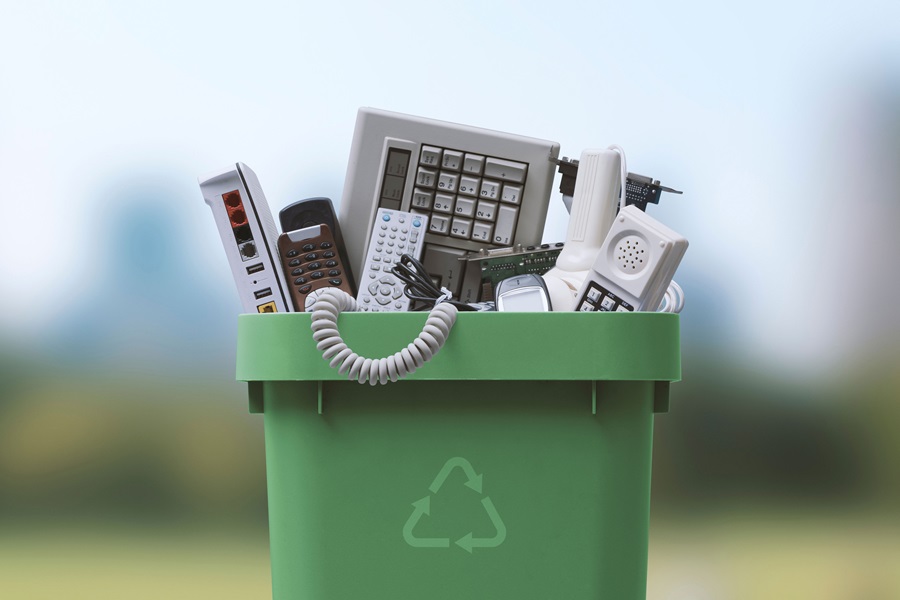Can home entertainment become more eco-friendly?
Sushil Motwani, Founder, of Ayetexcel Pvt. Ltd. writes about the environmental impact of electronic waste and how smart projectors can help mitigate it

Last month, a United Nations report informed that electronic waste is increasing faster than the rate of recycling to an extent that it could span the equator. It should be a matter of great concern to us that in 2022 alone, people around the world generated over 136.6 billion pounds of e-waste and just 22% or thereabouts of that waste was formally collected and recycled.
The sprawling crisis of E-Waste
Another report by the World Health Organisation also warns that E-waste is the fastest-growing solid waste stream in the world with lead being one of the most common substances released into the environment. The U.N. Institute for Training and Research informs that any discarded product with a plug or battery is a health and environmental hazard as it has toxic substances. When electrical and electronic devices like mobile phones, speakers, VR headsets, televisions, LEDs, LCDs, tablets, desktops, laptops, monitors, smart watches and assorted household appliances are dumped on land, in landfills and in water bodies, they release what WHO describes as over a 1000 different chemical substances including dioxins, lead and mercury to contaminate air, water and soil. Lead in fact can harm the brain and nervous system while E-waste with carbon dioxide and methane emissions, can add to global warming.
How consumer behaviour can contribute to change
It is critical that E-Waste management and recycling is regulated and legislated strictly. As consumers, we also need to be aware of how to safely dispose of electronic gadgets while the manufacturers must work towards minimising the environmental impact of their products and adhere to ISO 14001 certification, which is a global standard for environmental management systems (EMS). Consumers can mindfully disengage from the cycle of consumption and waste generation by investing in products that are built to last. Buying energy star certified home entertainment devices is good for the environment while taking good care of your electronics will extend their life considerably. For instance, if you have a projector, reading the manual carefully, keeping the device in a cool and dry place, allowing it to cool down between viewing sessions, keeping the lens clean etc will give you years of uninterrupted entertainment.
Read the fine print
Before buying a device, check its sustainability quotient. Recyclable AV equipment for instance has a smaller carbon footprint. LED TVs on the other hand could contain hazardous materials including flame retardants. American company Votechnik, which has developed a series of deep technologies in the space of circular economy for LCD recycling, has published an interesting piece on Linkedin. Here, Votechnik cites a report by the Environmental Working Group to state that lead and cadmium levels found in TVs are far higher than in children’s toys.
Greener options
So is there any other option for immersive home entertainment? To arrive at an answer, you could compare the energy efficiency of both projectors and televisions. Projectors take up less space, are cost-effective, have portability, are adaptable and flexible to suit multiple viewing needs both indoors and outdoors and have larger-than-life, customisable screens. Most importantly, they also consume less power, save energy costs and yield a smaller environmental footprint. Remember also that larger TVs tend to consume more energy compared to smart projectors that not only have a longer lifespan, generate less heat but also reduce the overall energy footprint. When maintained well, projectors do not need frequent repairs or component replacements and hence generate less electronic waste.
Why are laser projectors better?
Laser projectors are more or less zero maintenance and also offer bright, crisp, unfading images year after year. Their higher resolution, wide colour spectrum, stunning contrast ratio and colour accuracy offer a cinematic experience right at home. They are easy to install, offer noiseless projection and thanks to their portability, can travel with you during camping trips, or facilitate a movie or game night in any room of your choice or even in your backyard.
A game-changing aspect of smart projectors is the absence of a hazardous material like mercury in their light sources. This makes them safer both for the consumers and the environment. Eco-sensitive manufacturers are also focusing on the recyclability of materials to minimise electronic waste as well as a thoughtful design which makes disassembly easy for convenient recycling. With consumers and manufacturers becoming more eco-conscious, we may be at the cusp of an entertainment revolution that is rooted in sustainability.
While looking for a home entertainment device, make a choice that suits your lifestyle, viewing needs, budget and sustainability parameters and if affordability is central to your decisions as a consumer, do remember that with consistent energy saving and longevity compared to traditional TVs, smart projectors offer value for money year after year.
In summation, I believe consumers and manufacturers must focus on cultivating a sustainable relationship with the environment and minimise waste generation for the sake of a greener and healthier planet.

